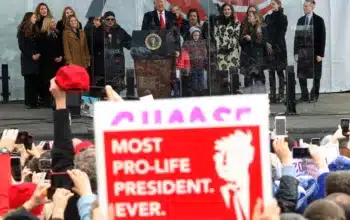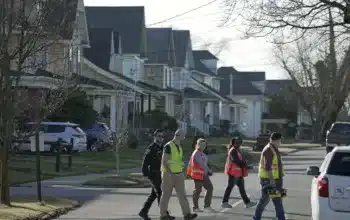The story of No Sudden Move, now on HBO Max, hinges on real-life car manufacturer conspiracies and racist policies in Detroit.
Three small-time criminals in 1950s Detroit are hired by somebody to steal something. What is it? Who wants it? They have no idea, but they need the cash, so they don masks — only on the top half of their faces, a novel sight — and head out to do the job.
But the crooked path to a quick payday never goes smoothly, at least in the movies.
Steven Soderbergh has made another heist movie, his sixth after Out of Sight (1998), the Oceans trilogy (2001, 2004, 2007), and Logan Lucky (2017). But you could argue a lot of his other movies are heists too; the director is always making films about how money and capitalism find their way into every part of our lives, from politics and sex to sports and mental health care.
So it is no huge surprise that No Sudden Move — a rippling, brilliant story about trusting nobody — has some seemingly banal but actually fascinating economic and cultural underpinnings pulsing in its historical backdrop. Soderbergh developed the idea with screenwriter Ed Solomon (who wrote the Men in Black and Bill & Ted series, among others), and Solomon focused on getting the history of mid-century Detroit right.
A note: If you haven’t yet watched No Sudden Move, now streaming on HBO Max, you should, probably before you read any further. I won’t spoil the twists, but it’s worth enjoying the movie on its purely pleasurable heist-movie surface before you dig into the background.
Soderbergh was slated to shoot the film in spring 2020 — we know how that went — and was able to pull it off in fall 2020 with almost the entire original cast, save for George Clooney (who dropped out over safety concerns for his young asthmatic son; we don’t know which role he had been cast to play). It’s one of two movies Soderbergh shot amid the pandemic, during which he also led the Directors Guild of America in developing and implementing Covid-safe protocols for production.
The movie, as it stands, is delightful. I’m a little mad it won’t play on movie screens, but don’t let that keep you from watching it on your TV. Its cast is mind-bending: Don Cheadle, Benicio del Toro, David Harbour, Brendan Fraser, Jon Hamm, Amy Seimetz, Julia Fox, Ray Liotta, Kieran Culkin, Noah Jupe, Frankie Shaw, Bill Dude, and Craig muMs Grant (and a few surprises too). But more fun than watching the cast act is the feeling of being in good hands, of watching a confidently directed movie that has something to say but doesn’t sacrifice style for substance. Soderbergh shot on modern cameras but used period wide-angle lenses, creating a strange fish-eye effect at times and never letting you forget that No Sudden Move is a movie. It’s a pure thrill to watch.
Plot-wise, however, No Sudden Move is twisty — and to be honest, it can be pretty confusing. I saw it twice, and there are still a few bits I haven’t ironed out. In addition to the plot twists (which I won’t cover here in detail), there are all the historical things happening in the background. And identifying them can help make the film’s point even clearer.
/cdn.vox-cdn.com/uploads/chorus_asset/file/22694095/nosuddenmove3.jpeg) HBO Max
HBO MaxRacist housing practices created the conditions in which No Sudden Move takes place
Detroit in the 1950s was a city in the midst of upheaval. No Sudden Move is situated in the nexus of multiple political and social shifts, in 1954, with characters who are conspiring with, benefitting from, or trying to outrun the changes.
Important to No Sudden Move is Detroit’s history as the 20th-century capital of automotive manufacturing, America’s “Motor City.” Ford, General Motors, and Chrysler, among others, were all founded in Detroit. By 1950, a few years before No Sudden Move is set, Detroit was the fourth-largest city in America, with 296,000 jobs in manufacturing.
So cars are front and center in the film. People are always getting into and out of them, committing crimes and plotting crimes in those big, wide vehicles with their big, wide seats. The camera lingers on them, reminding us that cars are on everyone’s minds.
But much more important is the mid-1950s racial history of Detroit. Several characters hint at the racist underpinnings of everyday life, notably Curt Goynes (Don Cheadle), who faces casual racism from several other characters and knows to only really trust the Black characters he encounters in a few key situations.
There are two main topics the film covers in this regard: the practice of redlining, and the imminent razing of two Black communities.
Redlining is the very common practice in the US (and Canada) of essentially creating artificially segregated communities by denying services such as banking and insurance to residents of specific neighborhoods, usually those where Black people live. Some house deeds specified that the property could only be sold to whites. The US government got in on the act; in the 1930s, the Federal Housing Administration refused to insure mortgages near Black neighborhoods, and also subsidized builders who produced whites-only neighborhoods. Black families were frequently denied mortgages that were granted to white homebuyers with lower incomes. The practice wasn’t officially outlawed until 1968, when the Fair Housing Act was passed — though investigative reporting has confirmed residents’ suspicions that it effectively continues today, including in Detroit.
As a result, property values in white neighborhoods would be higher than those in Black communities, and the demarcation lines were sharply drawn. Redlining had long-term effects. Upward mobility was limited for Black Detroiters, whose money couldn’t buy the same houses and services as that of white Detroiters. Black families who owned homes were denied the ability to pass along generational wealth in the same ways as their white counterparts. And when the legality of redlining practices was reversed and white people fled to the suburbs, Black people found they faced the same discrimination in the new suburban communities.
At the time when No Sudden Move is set, redlining is common practice, supported by whites — something the characters discuss. There’s also a related looming threat: When Curt visits an old friend’s house to retrieve an item hidden there, he makes small talk with her husband by discussing the upcoming destruction of a neighborhood. What he’s talking about actually happened: the razing of Black Bottom.
/cdn.vox-cdn.com/uploads/chorus_asset/file/22694116/lafayette_park.jpeg) Mike Russell via Wikimedia Commons
Mike Russell via Wikimedia CommonsBlack Bottom was a vibrant neighborhood on Detroit’s East Side, home to mostly Black residents and a handful of other European immigrant communities. Most of the residents worked in manufacturing and were poor. Redlining practices, which restricted residents’ access to the New Deal housing benefits that were granted to others, made it hard to leave Black Bottom and created less-than-ideal housing conditions. But it was known as a lively neighborhood with a notable music scene, and musicians who lived there contributed to the development of jazz, big band, and the blues. The nearby neighborhood Paradise Valley was in a similar situation, and it was the center of Black business in the city.
In 1944, Detroit Mayor Edward Jeffries and the town council proposed that the city start to remove “old structures” around town. In their sights: Black Bottom and Paradise Valley. Black communities made gallows-humor jokes about “urban renewal” actually being “Negro removal.”
The city finally got the money it needed to do the job in 1949 with the passage of the National Housing Act. Two months later, demolition began. Black Bottom was slowly torn down into the 1950s. There were promises of affordable housing being made available, but Black residents were often barred from moving into it. If you had enough money, you might be able to move to another neighborhood — but only if you could somehow get around redlining.
Then the situation got even more serious. In 1956, President Dwight D. Eisenhower’s National Highway Act was passed, funding the construction of Interstate 75, which would render not just Black Bottom but nearby Paradise Valley completely destroyed. Any structures that had avoided the “urban renewal” razing were gone.
The passage of that act is still two years out in No Sudden Move, but the destruction of Black Bottom has been underway for several years. So when Curt jokes about it, he’s doing so with frustration. And the fact that the whole community will eventually be wiped out, thanks to the federal government’s decision to run a highway for America’s burgeoning car culture — and to facilitate suburban flight — is a big part of what’s happening in No Sudden Move.
The “smog conspiracy” tells the rest of the story
The highway’s impending arrival and Detroit’s heyday as America’s car manufacturing capital play another big role in a No Sudden Move plot point — or, really, in the film’s MacGuffin (though it turns out to be more important than we might have expected).
(If you don’t want to know any spoilers about the film, then really, this is where you should stop reading.)
At the very end of the film, when text begins to scroll across the screen, viewers might find themselves confused. The text explains that a few years after the film’s end, the federal government sued the major car manufacturers for conspiring to hide evidence that cars were causing pollution and suppressing catalytic-converter technology that could help combat the problem.
There’s a good chance it wasn’t clear that’s what No Sudden Move is about, unless you were paying very close attention. But such a lawsuit did happen, in the horrible but amusingly named “smog conspiracy” case of 1969. (You can read about the whole thing in detail, should you wish.) But in brief, the Department of Justice alleged that the “Big Four” automobile manufacturers in Detroit — American Motors, Chrysler, Ford, and General Motors — conspired from 1953 to 1969 to delay both the manufacturing of pollution-control devices and their installation in cars. Pollution was a real and obvious problem (especially in Los Angeles, where smog was causing huge issues for residents), but the companies dragged their feet on fixing it and agreed none of them would install the devices in their vehicles until they all did. It was, in essence, a cost-saving measure, at the expense of human lives and environmental health.
/cdn.vox-cdn.com/uploads/chorus_asset/file/22694129/542259800.jpg) Reuter Raymond/Sygma via Getty Images
Reuter Raymond/Sygma via Getty ImagesThe document that the trio of small-time crooks is hired to steal in No Sudden Move contains the plans for one of those devices. The goal is to keep the plans out of the wrong hands (which, from an air-breathing-person’s perspective, are the right hands). The contents of the document, and the purpose of stealing it, are kept opaque in the film, both from most of the characters and from the audience. All we know, and all the characters really know, is that the document is very valuable to someone. Who that person is, and why it’s so valuable to them, is left up to interpretation, and it’s never really spelled out until the end.
That context — as well as the racist practices in the historical background of the story — feed into No Sudden Move’s broader theme. It’s a movie about everyone getting double-crossed, how you can’t trust anyone, and how nobody is looking out for anyone else’s best interest unless it’s also their own. (There are arguably a couple of trustworthy characters in the movie, but even they have a transactional relationship more than anything else.)
The brilliance of No Sudden Move — apart from the terrific direction, performances, and movie-watching experience it serves up — is in how it layers all this history into a twisty crime tale that keeps the audience guessing. You wouldn’t have to know any of this history to follow what it’s doing. But the attention to detail only increases my admiration for the film and how subtly it weaves its social message into its snaky, bendy plot.
That the biggest car companies, the insurance companies, the banks, and the federal government are just as untrustworthy as any one character in the movie is, of course, all part of the game. Keep your eye on the ball, No Sudden Move says, because history tells us nobody else is going to look out for you.
No Sudden Move is currently streaming on HBO Max.
Author: Alissa Wilkinson
Read More



